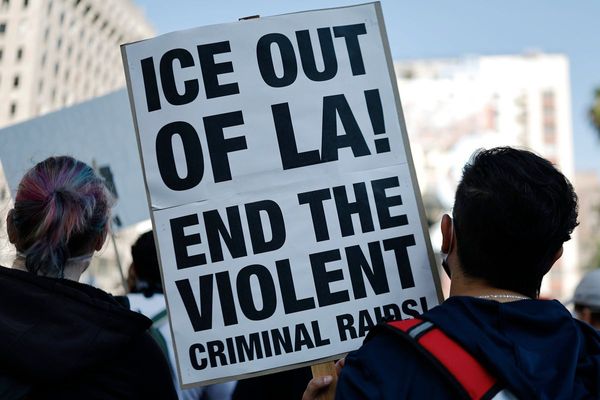
More stringent regulations surrounding moving under braking were introduced to Formula 1 in 2016 following drivers’ concerns around Max Verstappen’s defensive moves. Many drivers had complained to F1’s race director Charlie Whiting that Verstappen’s actions were extremely dangerous as he battled several rivals on track.
Whiting had previously reassured the grid that there would be a clampdown on the issue, which eventually came to a head at the 2016 Japanese Grand Prix. Verstappen - who had been called out on numerous occasions previously for the defence tactic - was in a tight battle for second place with Lewis Hamilton during the final few laps at Suzuka when the Mercedes attempted to overtake the Red Bull at Turn 16.
Verstappen moved under braking, which resulted in Hamilton taking avoiding action before going off the track onto the escape road. Mercedes protested the manoeuvre, which was later withdrawn after multiple statements from Hamilton including a tweet which read: "There is no protest from myself. Just heard the team had but I told them it is not what we do. We are champions, we move on. End of!"
Ahead of the following United States GP, Whiting sent event notes to the teams which warned he would view moving under braking as a breach of regulations.

What does moving under braking mean?
Moving under braking is a defensive action where a car moves or changes its line whilst braking, which can be done deliberately or by accident. Although a banned move, drivers still attempt to use it to prevent the driver behind from being able to overtake - but is highly unpredictable for other drivers and could cause a collision.
Regulations were introduced in 2016 by the FIA to prevent moving under braking, which includes Article 27.5 which states: “No car may be driven… in a manner which could be potentially dangerous to other drivers”, with Article 27.8 prohibiting any move which is “liable to hinder other drivers, such as premature direction changes, deliberate crowding of cars towards the inside or the outside of the curve or any other abnormal change of direction, are strictly prohibited and shall be penalised, according to the importance and repetition of the offences, by penalties ranging from a fine to the exclusion from the race.”
The regulations came after several drivers raised concerns over Verstappen’s driving, which specifically mentioned moving under braking and another defensive action called wait-and-move. The latter is when a driver waits to see which way the car behind will attack and then moves their car to defend.
At the time, drivers said the movements were dangerous because the cars are on the limit of braking and cannot brake further to avoid the leading car. Whiting initially said that Verstappen’s tactics were just within the limit of acceptability. The race director had previously pulled the Dutchman aside several times to warn him about his defensive tactics.
However, following a number of complaints Whiting sent a note to each of the teams ahead of the 2016 United States GP as a reminder about the regulations, adding: "With this in mind, and with the exception of any move permitted by Article 27.6, any change of direction under braking which results in another driver having to take evasive action will be considered abnormal and hence potentially dangerous to other drivers. Any such move will be reported to the stewards."
In 2016 Sebastian Vettel was the director of the Grand Prix Drivers’ Association and said: "It is very simple. The day I joined F1 it was clear and it was a sort of unwritten law, and in recent times we have had situations and got away with it.
"So for sure then the message is that everyone is starting to do it. It is the wrong thing because, as we spoke about yesterday, we are just waiting for something to happen. Therefore I think it is a good action."
The punishment for breaching the rules would see the FIA give drivers a time penalty of even a full race disqualification.
What are the current rules for moving under braking?
Following the battle between Verstappen and Lando Norris at the 2024 Austrian GP, opinion was divided on whether the FIA should clamp down on moving under braking. The three-time world champion was called out multiple times by the Briton for the dangerous manoeuvre before the pair collided on lap 64, which resulted in punctured tyres for both.
Verstappen denied moving under braking, however, McLaren team principal Andrea Stella claimed the clash was a result of a lack of punishment from previous incidents in 2021 between the Red Bull driver and Hamilton. Stella said: “The problem behind it is that if you don’t address these things honestly, they will come back. They have come back today because they were not addressed properly in the past when there was some fights with Lewis that needed to be punished in a harsher way.”
Although the FIA has attempted to clarify more about the regulations around moving under braking, it is down to the interpretation of the stewards who will make a decision on whether the driver responsible should be penalised.
Formula 1’s regulatory body is currently working on a set of regulations, currently called the Driving Standards Guidelines which is set to be released in 2025 and will bring together a set of rules which will apply to all categories.
An announcement was made to the teams in February that a series of terms would be used as a guideline in the “decision-making process of the Stewards” but “are not binding. The Stewards will use their discretion”. The list of terms included in the document released at the start of the year included specifically how the cars got into the incident - which mentioned moving under braking.
It read: "When defending, there must be no change in direction by the defending car, after the deceleration phase has commenced, except to follow the racing line." but also mentioned that: "Racing is a dynamic process. Although these guidelines indicate specific relative positions of the cars at various points, the Stewards will always look at how the situation played out in total when reviewing an incident. These decisions are often subjective. The Stewards will consider each incident, with expert advice from our Driver Steward, and make our best, but final, decision at the time."

Drivers who have been punished for moving under braking
Vettel is the only driver to have been given a punishment for moving under braking. The German was locked in a tight battle for third place at the 2016 Mexican Grand Prix with Verstappen, who had left the track and was asked to give the place back to the Ferrari driver, but instead backed Vettel into the catching Daniel Ricciardo.
On lap 69 Vettel was seen moving under braking to defend against the incoming Australian, with the pair almost coming together around the tight apex of Turn 4. At the end of the race, Verstappen was penalised for gaining an advantage by cutting the first corner and not giving the position back to Vettel. This five-second penalty saw Verstappen drop into fourth and Vettel attended the podium in third place.
Following the podium ceremony the four-time world champion was given a ten-second penalty for moving under braking, demoting him to a fifth-place finish.







